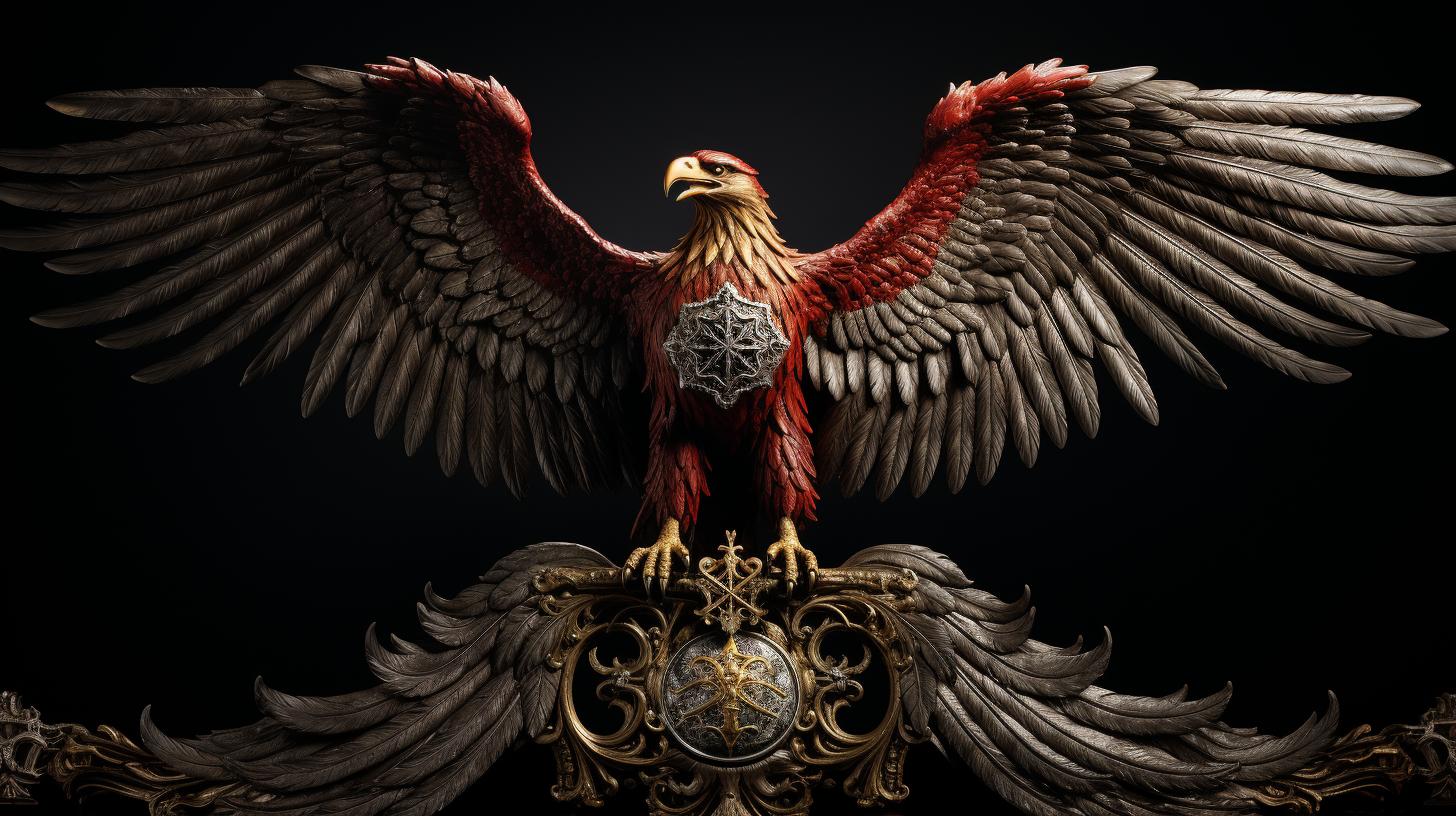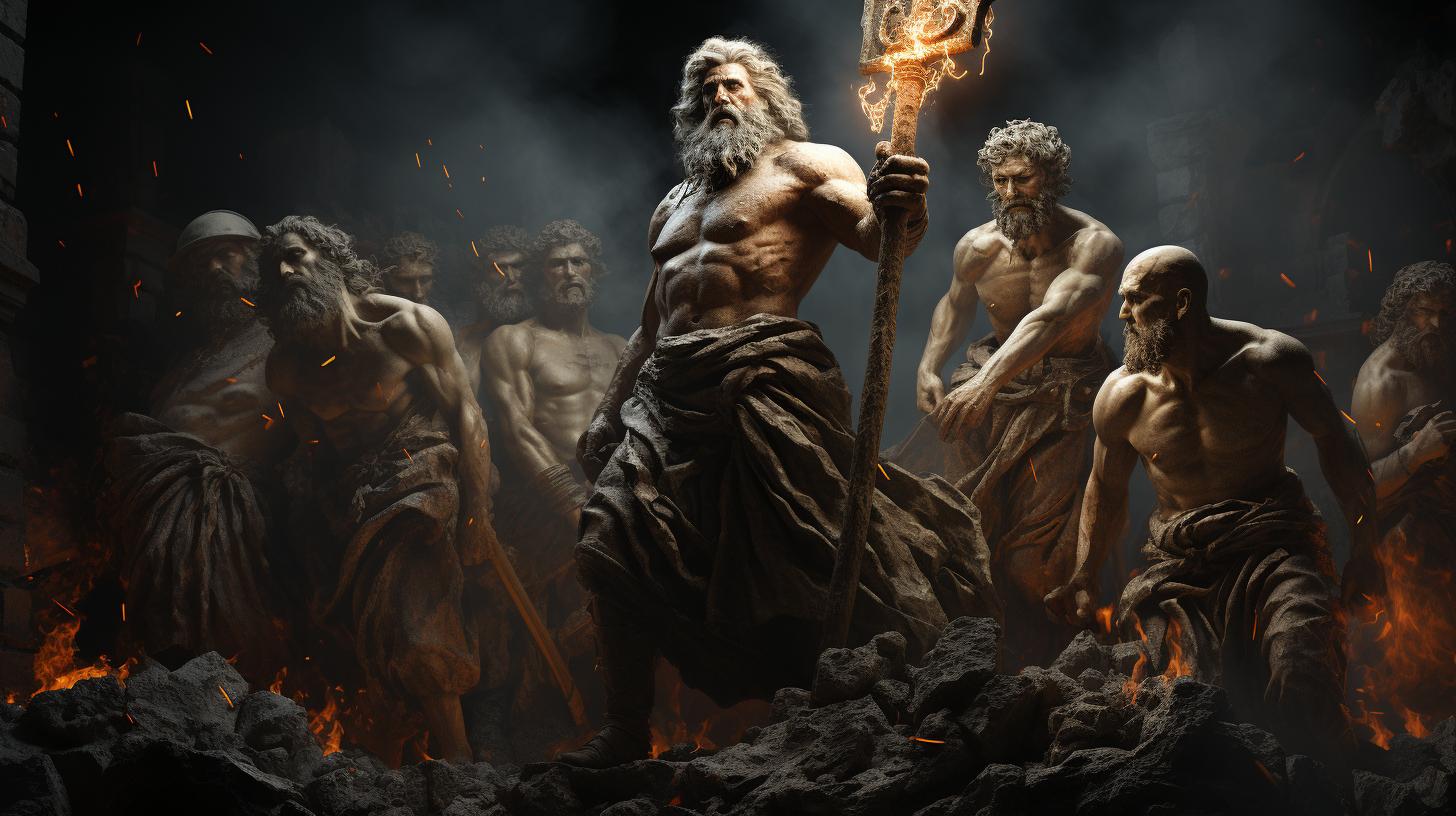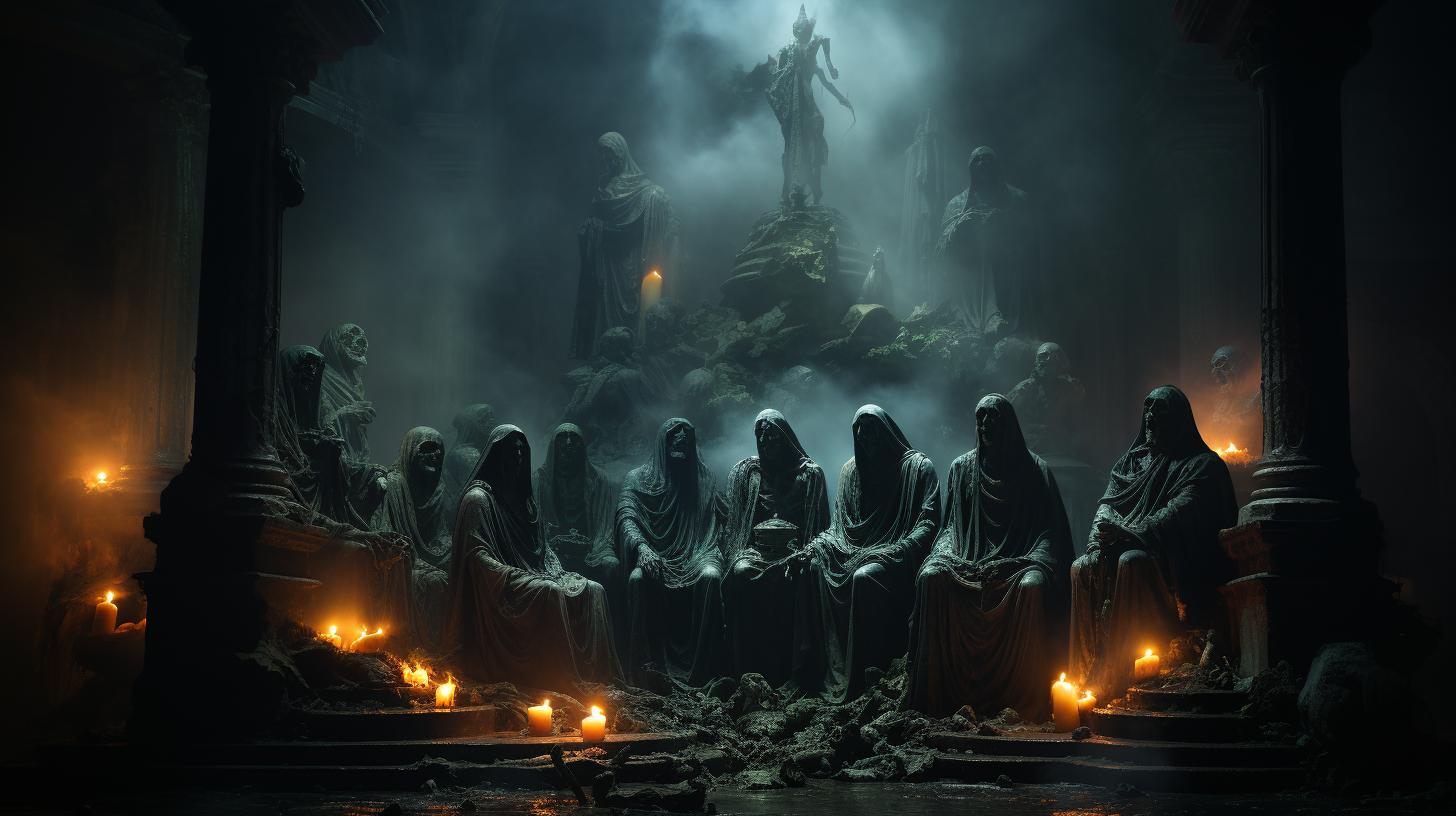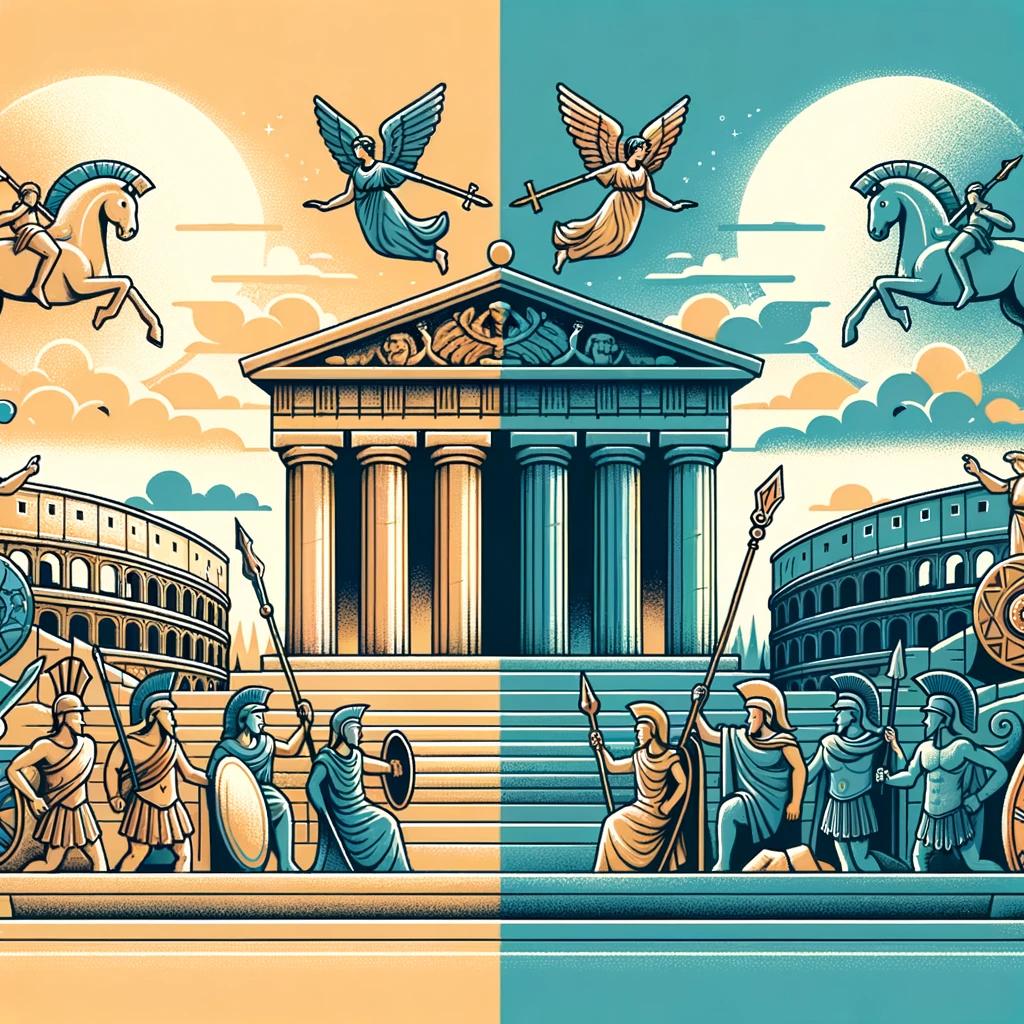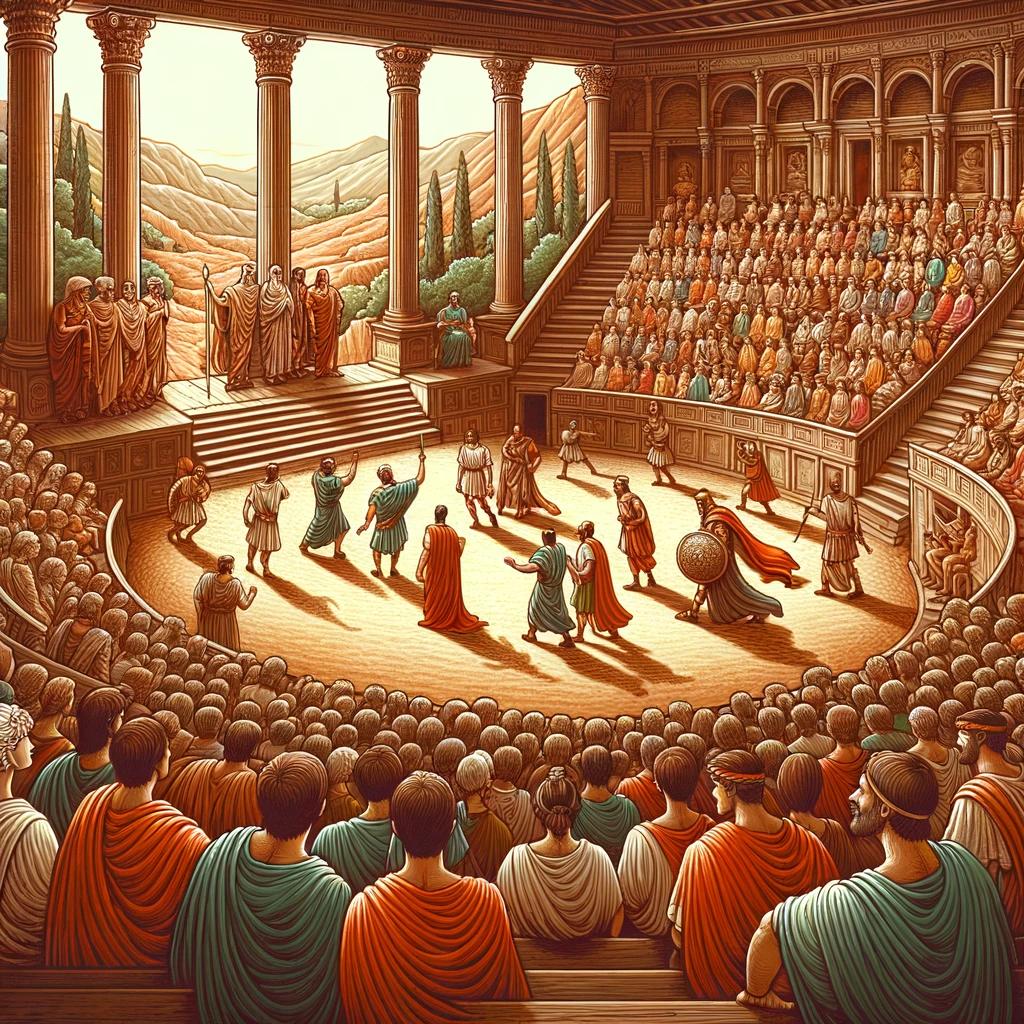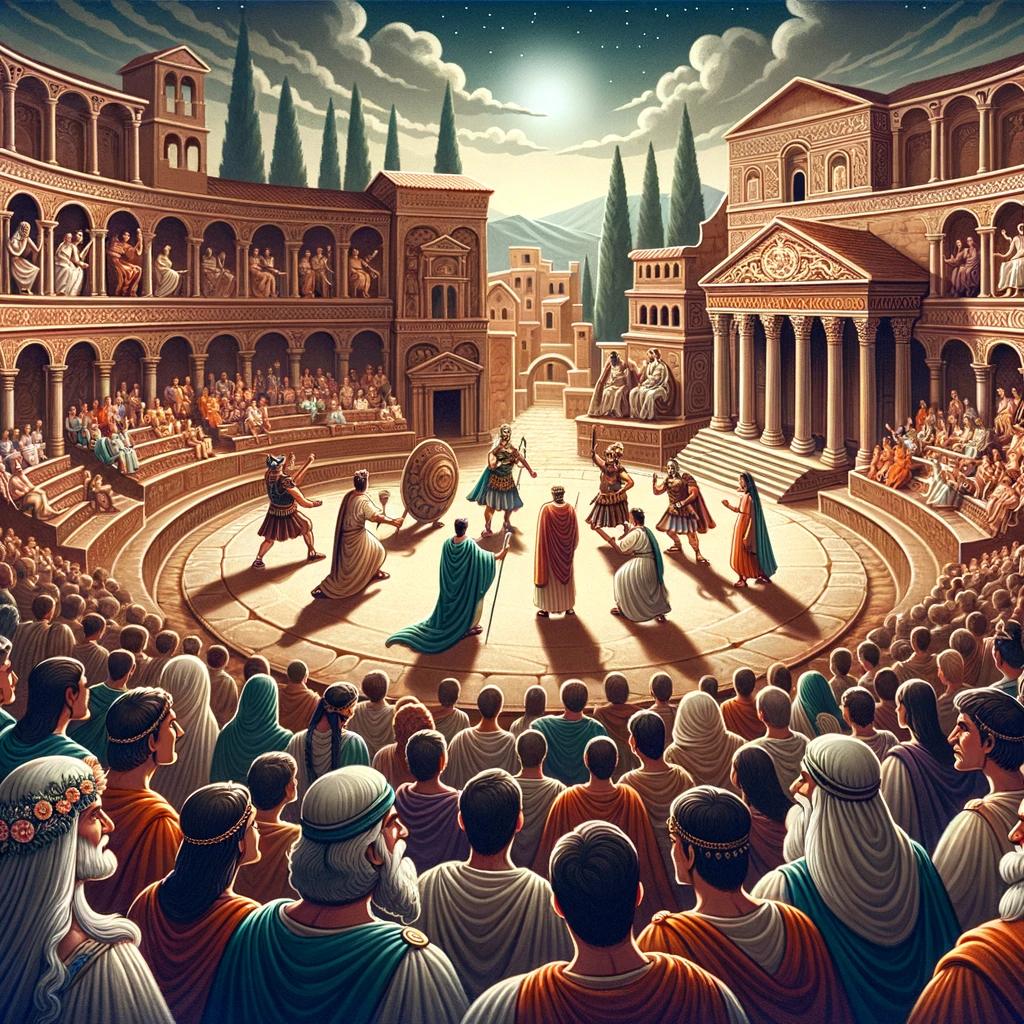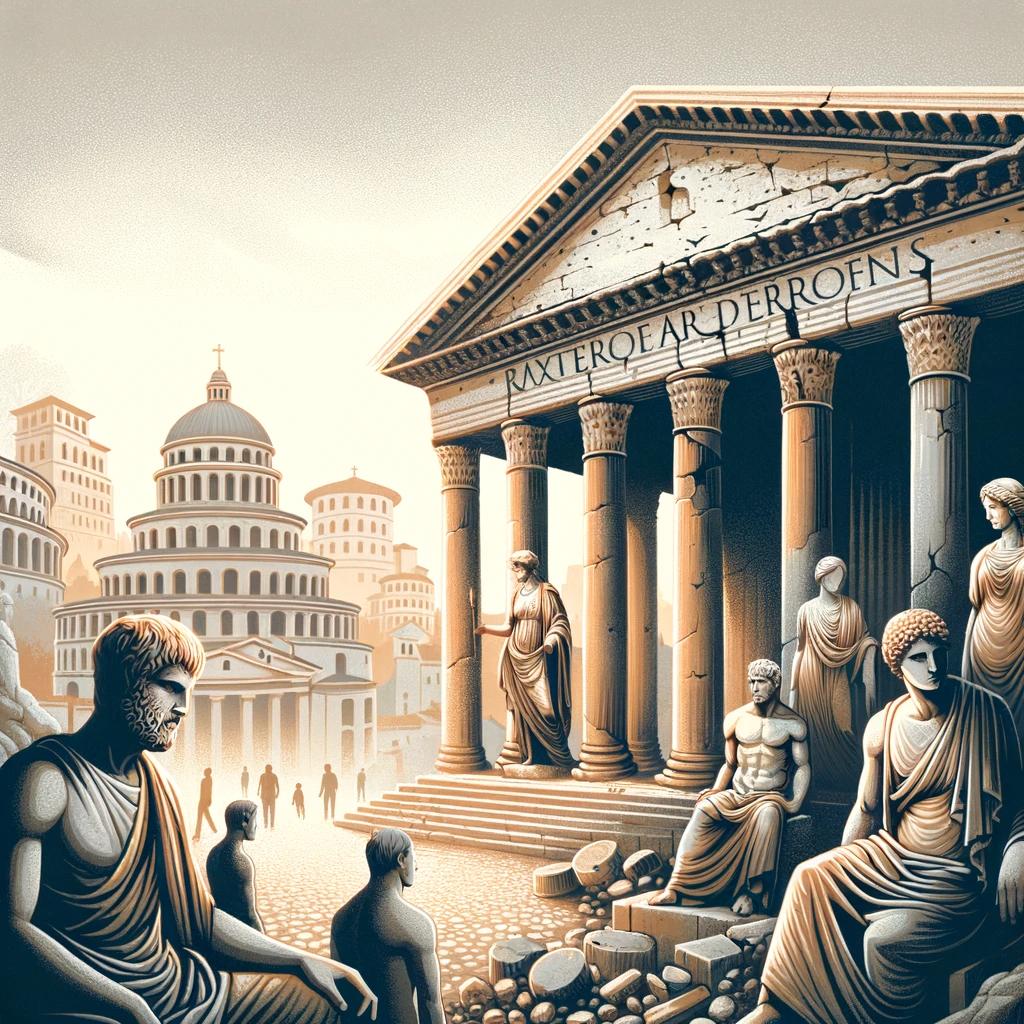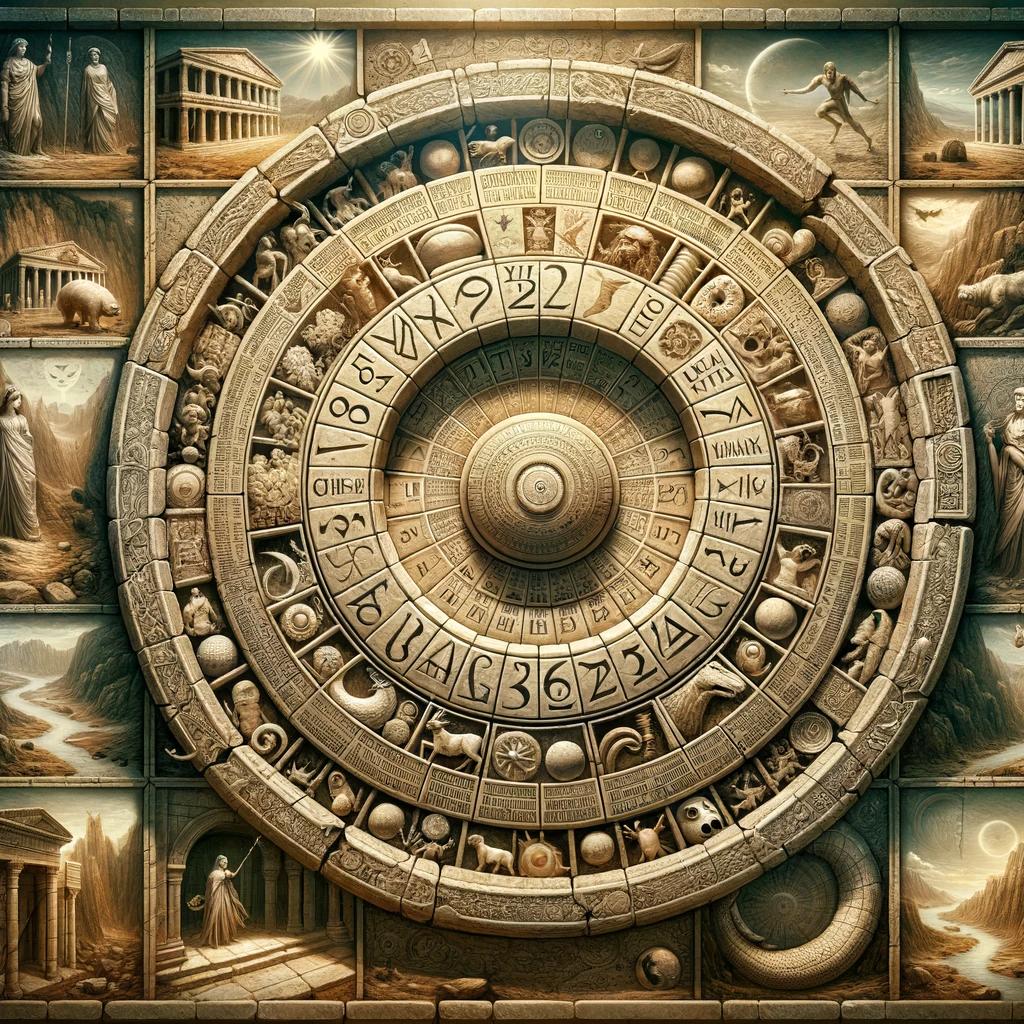Aquila Roman Eagle: The Iconic Symbol and Legacy of Ancient Rome
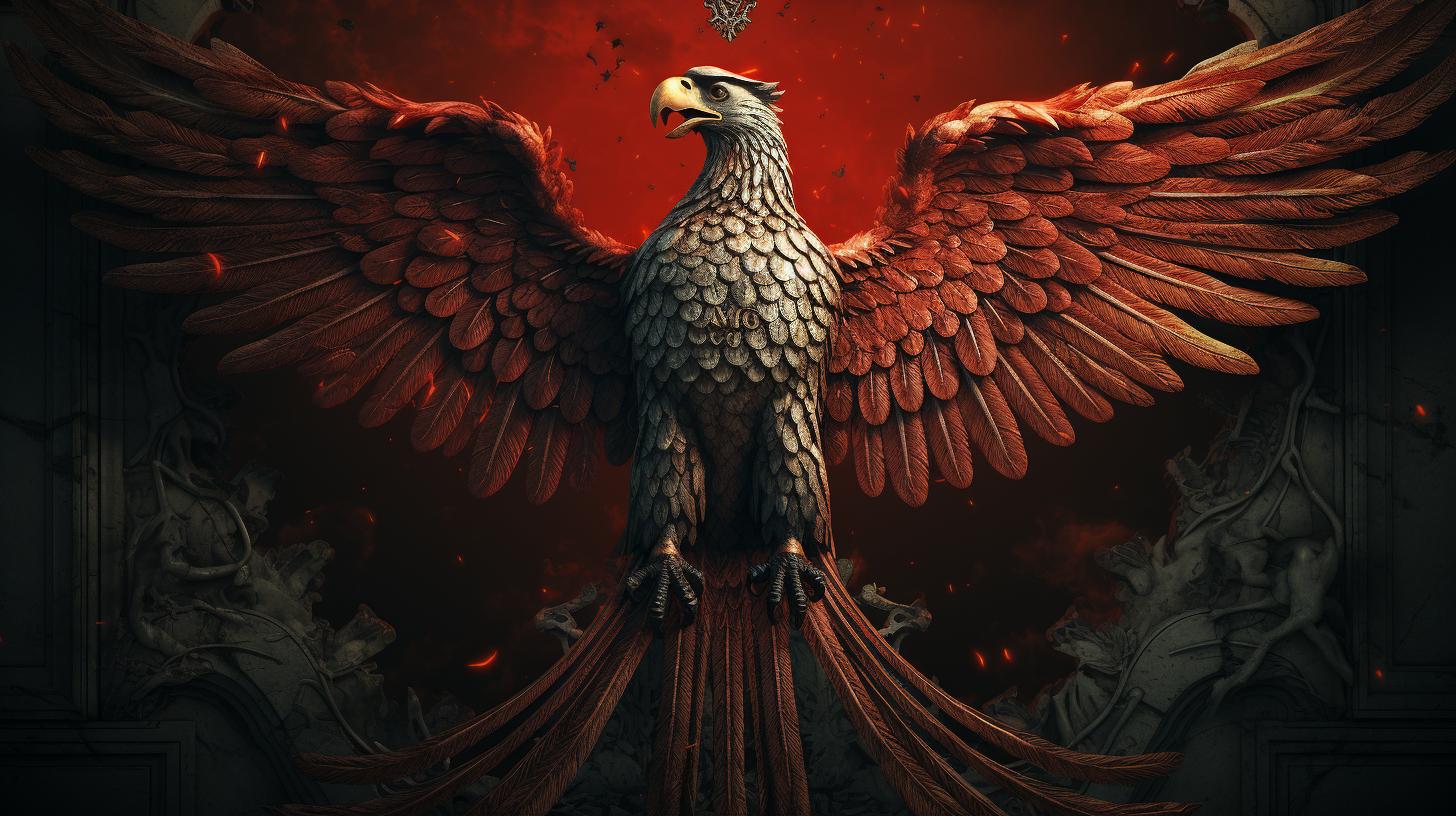
The Aquila Roman Eagle holds profound significance in the history of ancient Rome. Serving as a revered symbol and religious emblem for the Roman soldiers, its loss was considered a grave event.
This article explores the origins, symbolism, and military tactics associated with the Aquila, as well as the battles where it was lost and efforts made to recover it. Additionally, it delves into other Roman military standards and the enduring legacy of the Aquila in subsequent empires.
Lastly, it touches upon the contemporary influence and representation of this iconic Roman symbol.
History and Origins of the Aquila Roman Eagle
The Aquila Roman Eagle holds a significant place in ancient Roman history, symbolizing the power and glory of the legions. Its origins can be traced back to the early years of the Roman Republic when military standards were simple in design and purpose.
Let’s explore the evolution of Roman military standards and the adoption of the Aquila as the Roman Eagle.
Early Roman Military Standards
During the early days of the Roman Republic, military standards consisted of a handful of straw or hay attached to a spear or pole. These rudimentary standards served as rallying points for the soldiers on the battlefield, enabling them to identify and regroup with their respective units.
Over time, these simple standards evolved, incorporating various symbols and animals to represent different legions and units.
Adoption of the Aquila as the Roman Eagle
The Roman military underwent a significant transformation following the defeat at the Battle of Arausio in 104 BC. As a result, the eagle, or Aquila, emerged as the predominant symbol and standard of the Roman legions.
The adoption of the Aquila signified a shift towards a unified and cohesive military, where each legion revered the eagle as a religious and patriotic symbol.
The Aquila, with its regal and majestic presence, became synonymous with Roman military might and prowess.
It represented not only the legion it belonged to but also the entire Roman Empire. The soldiers swore an oath of allegiance to the Aquila, promising to protect it at all costs and even sacrificing their lives to prevent its capture.
Over time, the Aquila Roman Eagle became an integral part of Roman military tactics, serving as a guiding force for troop movements and battles. Its loss in battle was considered a grave matter, compelling the Romans to dedicate substantial efforts towards retrieving any lost Aquilas.
The history and origins of the Aquila Roman Eagle provide us with insights into the evolution of Roman military standards and the eventual prominence of this iconic symbol. Understanding its significance sets the stage for exploring the deeper symbolism and cultural importance associated with the Aquila.
Significance and Symbolism of the Aquila Roman Eagle
The Aquila Roman Eagle held immense religious and cultural importance for the soldiers of ancient Rome. It went beyond being a mere representation of their legion; it held a sacred meaning.
The loss of an Aquila was considered a grave matter, and the Roman army spared no effort to protect and retrieve it should it be lost.
Religious and Cultural Importance
The Aquila Roman Eagle was treated with reverence and held almost religious significance. It served as a symbol of power and authority, instilling a sense of pride and loyalty among the soldiers.
It represented the divine protection and favor bestowed upon the legion, signifying its connection to the gods and their blessings.
Furthermore, the Aquila symbolized the mighty Roman Empire itself. It embodied the strength, courage, and honor of the legion, serving as a rallying point in times of battle.
To lose an Aquila was not just a setback but a blow to the spirit and morale of the entire legion.
Role in Roman Military Tactics
The Aquila Roman Eagle played a crucial role in Roman military tactics, serving as a focal point for coordination and communication. It guided the movements of the legion on the battlefield, guiding soldiers and ensuring cohesion during battles.
The eagle’s presence uplifted and inspired the soldiers, solidifying their determination to fight for victory.
Moreover, the Aquila was a symbol of leadership. It represented the centurions, who would carry the eagle into battle, leading their troops with valor and strategic acumen.
The soldiers would rally around the Aquila, following its lead and maintaining discipline amidst the chaos of warfare.
The symbolism of the Aquila extended beyond the battlefield. It represented the might and grandeur of the Roman Empire, asserting its dominance and authority.
The eagle served as a symbol of Roman imperialism, spreading fear and reverence among friend and foe alike.
In summary, the Aquila Roman Eagle held immense religious and cultural significance within the ancient Roman military.
It symbolized divine protection, represented the might of the empire, and played a crucial role in coordinating and inspiring Roman soldiers during battles. Its cultural legacy and symbolic power endure even today, reminding us of the valor and strength of ancient Rome.
Loss and Recovery of Aquila Roman Eagles
In the tumultuous history of ancient Rome, the loss and recovery of Aquila Roman Eagles played a significant role. These revered symbols of the legions carried immense religious and cultural importance, making their loss a grave matter.
The Battle of Teutoburg Forest and Lost Eagles
One of the most notorious instances of Aquila Roman Eagles being lost occurred during the Battle of Teutoburg Forest. In 9 AD, three Roman legions suffered a devastating defeat at the hands of Germanic tribes led by Arminius.
Along with the loss of thousands of Roman soldiers, the battle resulted in the capture or destruction of the legions’ precious Aquilas.
The Borcht, Varus and Alaudae legions each saw their Aquilas vanish, leaving a lasting scar on Roman pride and military history.
The shame and dishonor associated with losing these sacred standards compelled the Roman Empire to undertake decades-long efforts to recover them.
Efforts to Retrieve Lost Aquilas
The recovery of lost Aquila Roman Eagles became a relentless mission for the Romans following the Battle of Teutoburg Forest. For years, search parties scoured the forests and territories, hoping to reclaim these cherished symbols of Roman might.
Despite these determined efforts, it remains uncertain whether any of the legendary lost Aquilas were ever recovered. However, the course of history has brought forward the discovery of other Aquila Roman Eagles, whether as symbols of imperial power or funerary emblems.
The Third Servile War, led by the gladiator Spartacus, witnessed the loss of Aquilas. The subsequent campaigns undertaken by Roman generals aimed not only to quell the rebellion but also to recapture the pride of the legions by reclaiming the lost standards.
Another significant event that saw Aquilas lost and eventually recovered was the Battle of Carrhae in 53 BC, where Marcus Licinius Crassus suffered a humiliating defeat against the Parthian Empire. Years later, during the reign of Emperor Augustus, Mark Antony successfully negotiated the return of the lost standards to Rome.
Conclusion
The loss and recovery of Aquila Roman Eagles marked pivotal moments in the history of ancient Rome. The Battle of Teutoburg Forest left an indelible legacy of defeat and shame, fueling the Romans’ determination to retrieve their lost standards.
While the fate of the legendary eagles remains uncertain, subsequent events have brought forth the discovery of other Aquilas, ensuring the enduring significance of these sacred symbols in Roman military history.
Other Roman Military Standards and Insignias
Within the Roman military, various symbols and insignias were used alongside the Aquila Roman Eagle. These additional standards and banners played a crucial role in identifying different cohorts and centurias within the legions.
Symbols in Roman Standards and Banners
Roman standards were adorned with a variety of symbols representing different aspects of Roman society and values. These symbols included:
- The wolf, symbolizing the fierce and protective nature of Rome.
- The ox with a human head, representing strength and intelligence.
- The horse, symbolizing speed and mobility in battle.
- The boar, a representation of resilience and tenacity.
These symbols served as visual representations of the virtues and characteristics that the Roman army held in high regard, further reinforcing their identity and purpose on the battlefield.
Role of Emperor’s Name in Standards
In addition to the symbols, Roman military standards also featured the name of the emperor. This inclusion highlighted the imperial authority and allegiance of the legions to the reigning emperor.
The emperor’s name inscribed on the standard signified the authority under which the Roman soldiers fought.
It solidified the connection between the legions and the imperial power, instilling a sense of loyalty and devotion within the Roman military ranks.
Furthermore, by prominently displaying the emperor’s name, the standards served as a reminder of the importance of the supreme authority and the empire’s established leadership.
Overall, the symbols and the emperor’s name on Roman military standards worked together to reinforce the unity, loyalty, and identity of the legions, enhancing their effectiveness on the battlefield.
Aquila Roman Eagles Beyond Ancient Rome
While the Aquila Roman Eagle held immense importance in ancient Rome, its significance extended beyond those times.
This section explores its usage in the Holy Roman Empire and its lasting legacy in the Byzantine Empire.
Use of the Aquila in the Holy Roman Empire
In the Holy Roman Empire, the Aquila continued to be employed as a symbol of power and authority. Emperors and rulers associated themselves with the Roman legacy, often incorporating the Aquila into their imagery and iconography.
It served as a testament to their connection to the great Roman civilization and sought to evoke a sense of continuity and imperial grandeur.
The Aquila’s presence in the Holy Roman Empire bolstered the rulers’ claim to legitimacy and signified their inherited authority.
The Roman tradition and the symbolism of the Aquila reinforced the perception of their rule as a continuation of the ancient Roman Empire, aligning them with the values and prestige of its past.
Legacy in the Byzantine Empire
The Byzantine Empire, often referred to as the Eastern Roman Empire, also embraced the Aquila as an important symbol. While the empire had its own distinct identity, it recognized and appreciated the cultural heritage inherited from Rome.
In Byzantine military traditions, the use of the Aquila symbolized the Roman virtues of bravery, discipline, and loyalty. It served as a reminder of the empire’s Roman roots and the military might associated with those early times.
The Aquila’s presence on standards and emblems helped foster a sense of unity, pride, and continuity within the Byzantine army.
Moreover, the Aquila’s use in the Byzantine Empire reinforced the empire’s claim to Roman legacy and imperial authority.
It solidified their position as the rightful heirs of the Roman Empire and bolstered their standing in the eyes of both internal and external audiences.
In conclusion, the Aquila Roman Eagle transcended ancient Rome and held a prominent place in subsequent empires.
Its utilization in the Holy Roman Empire and Byzantine Empire served to preserve the legacy of Rome, symbolize imperial authority, and foster a sense of continuity with the great Roman civilization.
Influence of the Aquila Roman Eagle Today
Popularity in Art, Culture, and Iconography
The Aquila Roman Eagle continues to captivate and inspire in various forms of art, culture, and iconography. Its powerful symbolism and connection to ancient Rome make it a popular subject for artists, historians, and enthusiasts alike.
- Artistic Depictions: The Aquila is frequently depicted in paintings, sculptures, and mosaics, showcasing its majestic presence and its significance in Roman history.
- Cultural Representations: The iconic image of the Aquila often appears in movies, television shows, and books set in the ancient Roman era, adding authenticity and historical context to these artistic mediums.
- Influence in Heraldry: The Aquila Roman Eagle’s image serves as inspiration for many heraldic symbols, coats of arms, and flags, representing valor, strength, and freedom.
Contemporary Significance and Representation
The Aquila Roman Eagle continues to hold significance in modern times, evoking a sense of strength, resilience, and pride.
It remains an emblem of honor and power, symbolizing the enduring legacy of the Roman Empire.
- In Sports and Entertainment: The image of the Aquila is often integrated into sports team logos, representing qualities such as courage, leadership, and determination.
- In Military and Government: The Aquila serves as a symbol of tradition and heritage in some military and governmental organizations, serving as a reminder of the ancient Roman origins and their values.
- In Education and Scholarship: Educational institutions and academic organizations may incorporate the Aquila Roman Eagle in their emblems, representing the pursuit of knowledge, intellectual prowess, and excellence.
The continued presence of the Aquila Roman Eagle in these various aspects of contemporary society reflects the enduring impact and symbolism it holds as a remarkable icon from ancient Rome.
.











